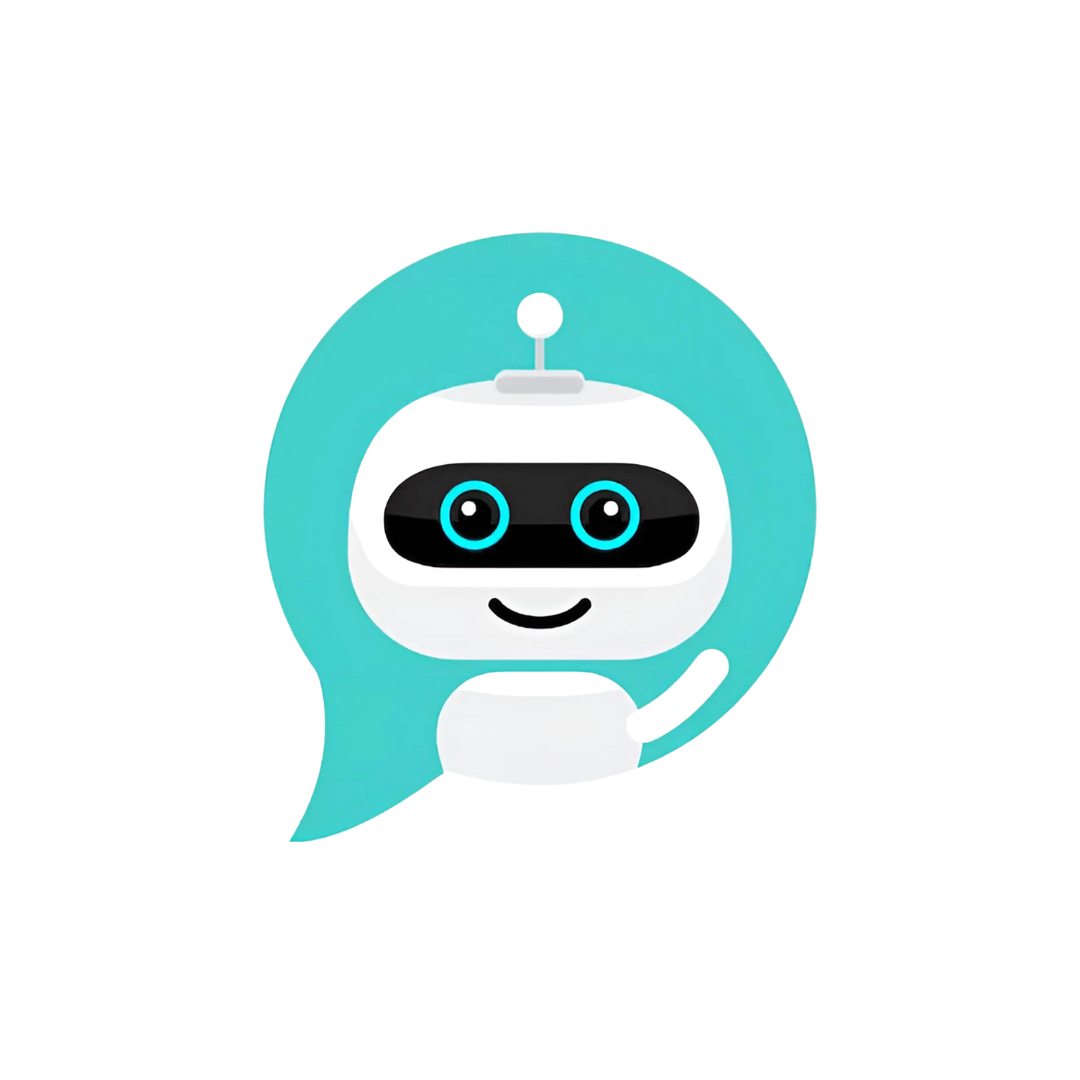Aitrich Training Methodology
Home > Aitrich Training Methodology
A revolutionary approach to technology training
The Aitrich Training Methodology (ATM) is a revolutionary approach to technology training that produces industry-ready software engineers within a short period of time. In today’s fast-paced tech industry, there is a growing demand for skilled professionals who can quickly adapt to changing technologies and work collaboratively in a team environment. Traditional methods of training often fall short in producing candidates with the necessary skills to meet these demands.





- A New Way of Learning Software Development
- Objectives of ATM
- Real World Experience with Software Development
- Learn and Develop like a Pro
- Transforming Students into Agile Software Engineering Teams
- Master the Art of Software Development
- Standard Tools of Software Development
- Iterative and Incremental Model with Sprints
- Agile Practices Transformed into Learning Activities
- Inclusive Learning Community
- Focus on Soft Skills and Team Skills
- Building Professional Profile and Landing your Dream Job



The Evolution of ATM
A New Way of Learning Software Development
Aitrich Training Methodology (ATM) was created to address the shortcomings of traditional learning methods in the field of software engineering. Traditional approaches rely heavily on theoretical knowledge and classroom-based learning, which often fail to provide students with the practical skills and experience required in the industry.
ATM takes a different approach, focusing on hands-on, experiential learning through a range of immersive, agile methodologies. By providing students with access to cutting-edge tools and technologies, along with a collaborative and supportive learning environment, ATM is able to create a unique and effective learning experience.
Moreover, ATM recognizes the fast-paced nature of the tech industry, where new technologies and trends emerge rapidly. By leveraging agile methodologies like Scrum, XP, and Kanban, ATM ensures that students are equipped with the latest industry-standard practices and techniques.
Ultimately, ATM’s goal is to produce industry-ready software engineers who are not only proficient in the technical aspects of software development, but also possess the leadership and team skills necessary to succeed in the modern workplace.
Objectives of ATM
- Provide an enjoyable and immersive learning experience for tech learners
- Ensure faster learning through a structured curriculum and personalized guidance
- Develop industry-ready software engineers who are proficient in standard tools and software engineering practices
- Foster an inclusive learning community that supports collaboration and growth
- Enable hands-on learning through real-world projects and teamwork
- Instill agile methodologies and practices that make students better team players and leaders
- Provide career support services such as profile building and mock interviews to help students attain key positions in their organizations
- Prepare students to withstand recessionary pressures and become high performers in their teams
- Ensure continuous learning and upskilling through access to industry resources and expert mentors.





Real-World Experience with Software Development
ATM takes a hands-on approach to learning by providing students with the opportunity to work on a real-world software project. This allows students to gain practical experience in all aspects of software development, including project management, requirements engineering, system design, UI/UX design, development, testing, and deployment. By working on a real-world project from end-to-end, students are able to understand how all the pieces fit together and how to work collaboratively in a team environment.
Practice Agile Methodologies SCRUM, XP, and Kanban :
Learn and Develop Like a Pro
ATM leverages the power of agile methodologies to transform the learning and development process. Training programs modeled around ATM are based on the principles of Agile and use SCRUM as the primary project management methodology. In addition to SCRUM, we also integrate practices from XP (Extreme Programming) and Kanban to create a comprehensive and effective learning experience.
XP emphasizes practices such as pair programming, test-driven development, continuous integration, and collective code ownership. These practices help students to learn and develop in a collaborative and iterative environment, ensuring high-quality code and fast feedback loops.
Kanban, on the other hand, emphasizes visualizing work and limiting work in progress. By using a Kanban board to track tasks and progress, students can stay focused and prioritize their work effectively. This helps to ensure that tasks are completed on time and that the team is working together efficiently.
In our training programs, we use a combination of SCRUM, XP, and Kanban to create short learning blocks, or sprints, focused on specific topic-based modules. These sprints are done as group activities, allowing students to work together, learn from each other, and develop team skills. This approach ensures that students learn in an immersive and enjoyable way, while also developing the skills and qualities required to become a mature and responsible software developer.





Facilitator-led Training -
Transforming Students into Agile Software Engineering Teams
In the Aitrich Training Methodology, the trainers play a critical role in transforming a batch of students into an expert software engineering team. They act as facilitators and mentors rather than traditional lecturers. They guide students to learn by doing, encouraging active participation, collaboration, and experimentation. This approach creates an immersive learning environment that mirrors real-world software development.
Trainers help students build a strong foundation in agile principles and practices, enabling them to work collaboratively as a team. They help students to identify their strengths and weaknesses and provide personalized feedback and guidance to help them improve. Trainers also play a crucial role in facilitating agile ceremonies, such as sprint planning, daily stand-ups, sprint reviews, and retrospectives.
Through this approach, trainers transform students into expert software engineering teams, capable of delivering high-quality software products using agile methodologies. They encourage students to embrace the agile culture of continuous improvement and innovation, fostering a mindset of curiosity, experimentation, and learning. By working closely with trainers, students develop a deep understanding of agile principles and practices, which they can apply to their future software engineering careers.
Software Engineering Principles and Practices:
Master the Art of Software Development
To become an expert in software development, it is crucial to follow and practice all the software engineering principles and practices. Training programs that follow ATM are designed to ensure that students learn and apply these principles and practices throughout the entire learning and development cycle.
ATM blends SDLC(Software Development Lifecycle) phases and activities in the learning and development process.
- Planning and Requirements Engineering: This phase includes activities such as project planning, defining business requirements, and creating user stories and a requirements document.
- Design: This phase includes activities such as creating system architecture, designing user interfaces following UI/UX Design using tools such as Figma, Sketch etc, and Domain Modeling.
- Development: This phase includes activities such as coding following test-driven development testing, and debugging the software.
- Testing: This phase includes activities such as unit testing, integration testing, and other automated tests to ensure that the software meets the requirements.
- Deployment: This phase includes activities such as configuring the specific deployment environments using CI/CD tools, releasing the software incrementally after each sprint, and monitoring its performance.
We also use an iterative and incremental model, using sprints for the product development and hence learning. By breaking the software development process down into manageable chunks, we help students to focus on each phase’s requirements and deliverables, ensuring that they master the art of software development.
Our training programs are designed to teach students how to follow and apply software engineering principles and practices throughout the entire software development lifecycle. By doing so, we help them to develop the skills and qualities required for a successful career in software development.






Standard Tools of Software Development
The ATM-based training programs use a wide range of standard tools for software development.
- Integrated Development Environments (IDEs): software applications that provide comprehensive facilities for software development, including code editing, debugging, and version control. Examples include Eclipse, IntelliJ IDEA, and Visual Studio Code.
- Version Control Systems (VCS): software tools that help track changes made to source code over time, allowing developers to collaborate on projects and maintain version histories. Examples include Git, SVN, and Mercurial.
- Issue Tracking Systems (ITS): software tools that enable teams to track and manage software issues and bugs. Examples include Jira, Trello, and Asana.
- Testing and Quality Assurance (QA) tools: software tools that enable teams to test and verify the functionality and quality of software products. Examples include Selenium, JUnit, and Appium.
- Build and Deployment Automation tools: software tools that automate the build and deployment process of software applications. Examples include Jenkins, Travis CI, and CircleCI.
- Containerization and Orchestration tools: software tools that enable teams to package software applications into containers and automate the deployment and management of those containers. Examples include Docker, Kubernetes, and Amazon ECS.
- User Interface and User Experience (UI/UX) tools: software tools that enable designers and developers to create visually appealing and intuitive interfaces for software applications. Examples include Sketch, Figma, and Adobe XD.
- Database Management Systems: MySQL, PostgreSQL, MongoDB
- Collaboration Tools: Slack, Microsoft Teams, Zoom
- Logging and Monitoring tools: software tools that help monitor and analyze the behavior of software applications in production environments. Examples include Logstash, Kibana, and Prometheus.
The training program also covers how to use these tools effectively in each phase of the software development lifecycle (SDLC). For example, during the planning phase, students learn to use Trello and JIRA to create and manage user stories and epics. During the design phase, they use Figma and standard modeling tools to create detailed system designs. During the coding phase, they use Git for source control and to collaborate with other team members on the codebase.
Through the use of these standard tools and by applying them to each phase of the SDLC, students gain hands-on experience in the software development process and become proficient in the tools used by software engineers in the industry. This experience makes them better prepared to enter the workforce and become successful software engineers.
Iterative and Incremental Model with Sprints
The ATM-based training programs use an iterative and incremental development model with sprints for the product development and learning. This approach allows students to break down complex projects into smaller, more manageable tasks, and to work on them in short sprints.
By working in sprints, students learn how to collaborate effectively with their team members, manage their time and workload, and prioritize tasks. They also learn to communicate regularly and effectively with their team members, and to share their progress and challenges with the team during daily stand-up meetings.
Through this process, students become better team players, leaders, and experts in agile software development. They learn to adapt to changing requirements and to continuously improve their work, which are key skills in today’s fast-paced software development industry.
Moreover, the iterative and incremental development model with sprints also helps students to stay motivated and engaged throughout the training program. By seeing progress on a regular basis, students gain a sense of accomplishment and confidence in their abilities, which further enhances their learning experience and prepares them for successful careers in software engineering.





Agile Practices Transformed into Learning Activities
ATM transforms Agile Practices into Learning Activities is an innovative approach to tech learning, where traditional learning activities are transformed into agile practices, making the tech learning experience more enjoyable and immersive for students. By implementing this approach, ATM makes the students experts in agile software development.
- Planning Sessions: The batch of students becomes a team of engineers who manage, plan, design, develop, test with automated tools and deploy after learning all these techniques as part of the program. Before the start of each sprint, the team conducts planning sessions where they define the scope of the sprint, break down the work into tasks, and estimate the effort required to complete each task.
- Daily Scrum Meetings: Each day during the sprint, the team holds a brief daily stand-up meeting where they review their progress, discuss any roadblocks, and plan their work for the day. This helps the team stay aligned, focused, and productive throughout the sprint.
- Kanban Board: The team uses a Kanban board to visualize their work and track their progress throughout the sprint. This board shows each task, its status (to-do, in progress, or done), and any blockers or dependencies. This helps the team stay organized, collaborate effectively, and identify and resolve any issues quickly.
- Test-Driven Development (TDD): As part of the program, the team practices TDD, a software development technique where developers write automated tests before writing the actual code. This helps ensure that the code is correct, reliable, and maintainable, and that it meets the acceptance criteria defined for each task.
- Product Demos: At the end of each sprint, the team conducts a product demo where they showcase the work they have completed during the sprint. This helps the team demonstrate their progress to stakeholders, receive feedback, and identify areas for improvement.
- Retrospectives: After each sprint, the team conducts a retrospective where they reflect on the sprint, identify what went well, what didn’t go well, and what they can improve for the next sprint. This helps the team continuously improve their processes, communication, and collaboration skills.
By leveraging these agile practices for the specific learning activities, ATM helps the students become experts in agile software development, develop strong team skills, communication skills, and leadership qualities, and make the tech learning a joyful and immersive experience.
Inclusive Learning Community
ATM fosters an inclusive learning community where students from diverse backgrounds can learn and grow together. This creates an environment where students can learn from each other, share their experiences, and gain a better understanding of different perspectives.
The facilitator-led learning approach ensures that every student gets individual attention and is able to learn at their own pace. The trainers are trained to be empathetic and patient, and they use a variety of teaching techniques to accommodate different learning styles.
The program also focuses on making the learning process more effective by incorporating feedback mechanisms, both from trainers and peers. Regular retrospectives and feedback sessions help students to identify their strengths and weaknesses, and work on improving them. The program also encourages students to ask questions and participate in discussions, which helps to build a sense of community and belonging.






Focus on Soft Skills and Team Skills
ATM-based training programs are not just about technical skills but also focus on developing soft skills, team skills, and leadership skills. The ability to work collaboratively in a team is an essential skill for a software engineer. ATM-based training programs create a collaborative learning environment where students work together on projects and assignments.
The project-oriented approach and Agile practices used in ATM help students to develop essential soft skills, team skills, and leadership skills that are highly valued by employers:
- Collaboration and Teamwork: The project-oriented approach of ATM requires students to work collaboratively in teams, promoting teamwork skills. Through Agile practices like daily stand-ups, planning meetings, and retrospectives, students learn to work together, communicate effectively, and resolve conflicts.
- Communication Skills: Agile practices like daily stand-ups and sprint demos encourage students to communicate their progress, challenges, and accomplishments to their team members and stakeholders. This fosters effective communication skills and helps students to articulate their ideas and thoughts clearly and concisely.
- Adaptability and Flexibility: The iterative and incremental approach of Agile methodology and the project-oriented approach of ATM require students to be adaptable and flexible. Students learn to adapt to changing requirements, timelines, and priorities, and to be open to feedback and continuous improvement.
- Leadership Skills: Agile methodologies encourage a self-organizing team structure, where team members take ownership and responsibility for their work. This promotes leadership skills and helps students to take initiative, make decisions, and lead by example.
- Problem-Solving Skills: The project-oriented approach of ATM and the iterative nature of Agile methodologies require students to identify, analyze and solve problems effectively. By working through the different stages of the SDLC, students develop analytical and problem-solving skills, which are essential in the software development industry.
- Time Management: The Agile practices of sprint planning, time-boxed iterations, and daily stand-ups, teach students how to manage their time effectively, prioritize tasks, and meet deadlines. This helps them to become more efficient and productive in their work, which is a valuable skill in any industry.
Career Support :
Building Your Professional Profile and Landing Your Dream Job
Learning technical skills is just one part of your journey towards becoming a successful software engineer. As part of ATM, we provide comprehensive career support to help you build your professional profile and land your dream job.
- Profile building on
LinkedIn
GitHub
StackOverflow - We’ll help you create a professional online presence that showcases your skills and achievements. We’ll also provide guidance on how to network and connect with potential employers.
- Video resume building: We’ll work with you to create a video resume that highlights your technical skills, soft skills, and career goals. This is a great way to stand out from the crowd and make a strong first impression.
- Mock interviews: We’ll conduct mock interviews to help you practice your interviewing skills and gain confidence. Our experienced trainers will provide feedback and guidance on how to improve your responses.
- Real interviews with employers: We have strong relationships with top employers in the tech industry. We’ll connect you with these employers and help you prepare for real interviews. Our goal is to help you land your dream job and start your career on the right foot.
Our career support doesn’t end once you’ve landed your first job. We’ll continue to provide guidance and support throughout your career, helping you to advance and achieve your goals. At ATM, we’re committed to your success, and we’ll do everything we can to help you achieve it.



Our Training Programs

Java/Spring Developer
Java/Spring Developer course is designed to teach developers how to build web applications using Java programming language and the Spring Framework.

Enterprise Java Developer
Enterprise Java Developer is a comprehensive course that covers Java enterprise development concepts and technologies. It is designed to equip learners with the necessary skills and knowledge to develop enterprise-level Java applications.

Java Cloud Native Developer
Java Cloud Native Developer course is designed to teach developers how to build cloud-native applications using Java programming language and modern cloud-native technologies such as containers, Kubernetes, and microservices architecture.

.Net Core Developer
.NET Core developer course is designed to teach students the fundamentals of developing web applications using .NET Core. The course covers various topics, including C# programming language, object-oriented programming principles, ASP.NET Core and advanced topics.

Python Web developer
Python web developer course is designed to teach developers how to build dynamic, scalable, and secure web applications using Python programming language and web frameworks.

Front-end Web Developer - Angular
Angular Developer course is designed to teach students how to build dynamic, single-page web applications using the Angular framework. Students will learn the fundamentals of Angular and will gain practical experience building and deploying Angular applications.

Front-end Web Developer - React
Front-end Web Developer - React course is designed to teach developers how to build modern web applications using the React JavaScript library.

MEAN Stack Developer
MEAN Stack Developer course is designed to teach developers how to build web applications using the MEAN stack, which is a collection of JavaScript-based technologies including MongoDB, Express.js, Angular, and Node.js. Here is a general description of what may be covered in such a course:

MERN Stack Developer
MERN stack developer course is designed to teach students how to build web applications using the MERN stack, which is a collection of technologies including MongoDB, Express.js, React, and Node.js.

Node JS Developer
Node.js developer course is designed to equip learners with the skills and knowledge necessary to develop scalable and efficient server-side applications using Node.js

Mobile Developer-Android
Android developer course is designed to teach developers how to build native mobile applications for the Android platform using the Java programming language and the Android SDK.

Mobile Developer-Flutter
Flutter mobile developer course is designed to teach students how to build mobile applications using Flutter, a popular open-source mobile app development framework created by Google.



